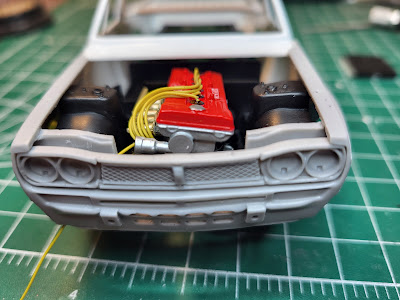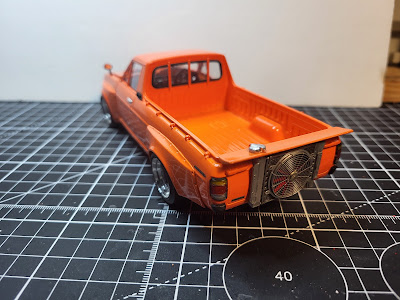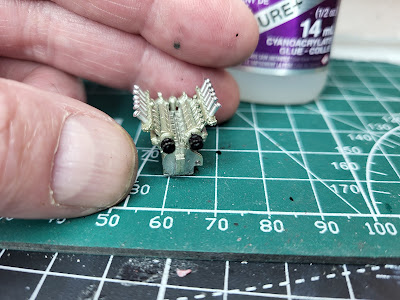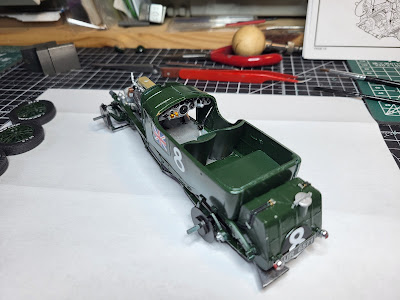I realise I didn't write up the initial building and planning on this.
The Hakotora is a pedestrian Nissan Sunny pickup truck decked out to look like the classic Skyline, possibly with the addition of a widebody kit instead of the rubber fender lips.
C1 Models made two Hakotora kits for the Hasegawa Sunny, one with the rubber fenders and the other a widebody kit with a complete front clip. (The Skyline kit is for show only; no Skylines were damaged in this project, although I was tempted until I came across the C1 Models transkit.)
As the Sunny had a four, the standard upgrade is to a twin-cam, 16V Nissan 4, but I chose to stuff in the six from one of the Fujimi assortment kits. This in turn entailed moving the radiator to the tailgate as I did with my Subaru Brat WRX.
Other bits came from the boneyard and parts shelves. The fan and shroud is a nice photetched set from Detail Master, for instance.
What's next? No idea. Stay tuned!









































